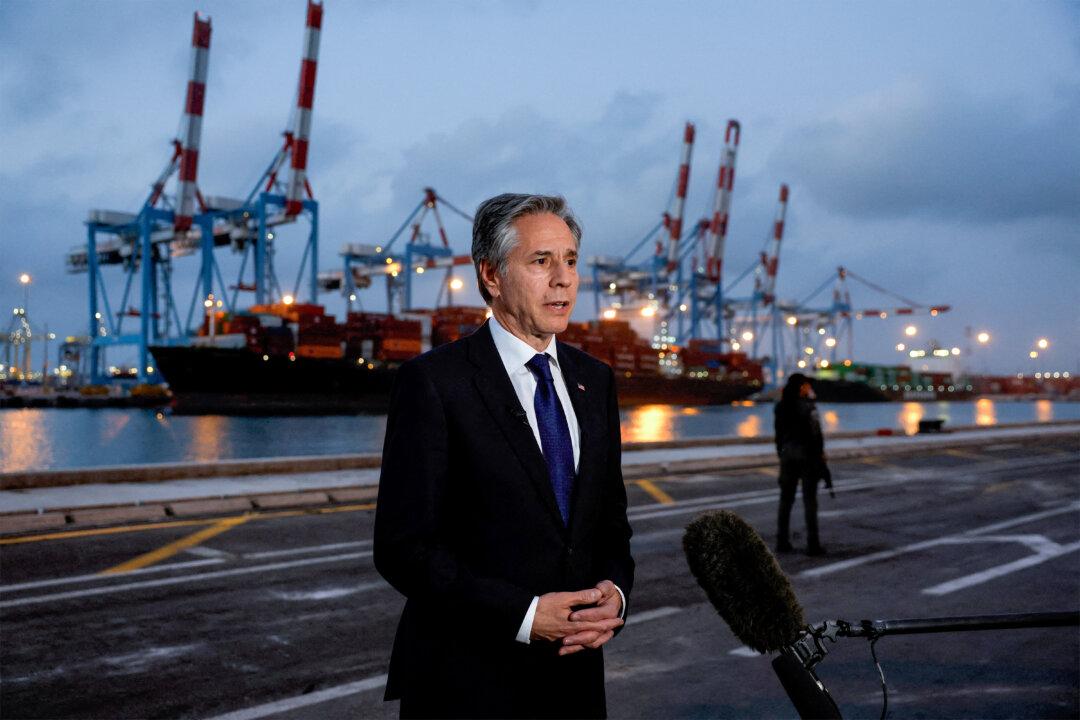Secretary of State Antony Blinken met with Israeli Prime Minister Benjamin Netanyahu, President Isaac Herzog, and War Cabinet member Benny Gantz, on May 1 as the United States hopes to facilitate a temporary cease-fire in the ongoing Israel–Hamas war and advance other humanitarian considerations amid the conflict.
Israeli negotiators recently submitted a proposal for a temporary cease-fire, allowing for a limited exchange of hostages taken by Hamas terrorists on Oct. 7, 2023. Speaking at a World Economic Forum conference in the Saudi Arabian capital of Riyadh on April 29, Mr. Blinken described the Israeli ceasefire terms as “extraordinarily generous” and insisted that Hamas accept the offer.
Part of the breakdown in the cease-fire talks has been over how long a pause in the fighting would last.
Mr. Netanyahu has said that one major goal of the ongoing Israeli military operations is to bring about Hamas’s total defeat. The Israeli side has argued for a temporary pause in the fighting, while Hamas has been reluctant to relinquish its hostages without a permanent cease-fire and withdrawal of Israeli forces from the territory.
Biden Admin Continues to Oppose Rafah Offensive
In addition to discussing the cease-fire terms, Mr. Blinken reportedly “reiterated the United States’ clear position on Rafah.”For weeks, the Netanyahu government has been deliberating over whether to send ground troops into the southern Gazan city of Rafah. The Netanyahu government views the city as one of the remaining strongholds for Hamas terrorists, but President Joe Biden’s administration has raised concerns about the risks Israeli military operations could pose to the city’s civilian population.
“We’ve said clearly and for some time now on Rafah that in the absence of a plan to ensure that civilians will not be harmed, we can’t support a military—a major military operation in Rafah,” Mr. Blinken said during his visit to Riyadh on April 29. “And we have not yet seen a plan that gives us confidence that civilians can be effectively protected.”
Earlier on in the war, Israeli forces routinely advised residents in the northern parts of the Gaza Strip to evacuate southward to avoid being caught in the crossfire. More than a million people have since relocated to Rafah, which runs along the southern Gaza border with Egypt.
While the Biden administration has urged against a full-scale military offensive in Rafah, Mr. Netanyahu has signaled continued interest in the move.
On April 27, Israeli Foreign Minister Israel Katz suggested that the Israeli side might not pursue military operations in Rafah if a hostage deal could be reached with Hamas. But on April 30, Mr. Netanyahu insisted that Rafah remains a major military objective and that Israeli forces would carry out an offensive eventually, even if a hostage deal is reached.
“The idea that we will stop the war before achieving all of its goals is out of the question,” Mr. Netanyahu said, according to a statement from his office. “We will enter Rafah and we will eliminate Hamas’ battalions there—with or without a deal—to achieve the total victory.”
Humanitarian Efforts Improving, State Department Says
The Biden administration has pressured the Netanyahu government to improve the flow of humanitarian assistance into the Gaza Strip and to ensure that such aid can be distributed once it reaches the territory.According to the State Department’s readout from Mr. Blinken’s meeting with Mr. Netanyahu, the secretary of state told the Israeli head of state that humanitarian conditions had indeed improved in Gaza since the call. Mr. Miller said the secretary of state “reiterated the importance of accelerating and sustaining that improvement” during his meeting with Mr. Netanyahu.
“We have other efforts that have been undertaken,” he said, noting an ongoing U.S. military-led effort to establish a makeshift pier on Gaza’s Mediterranean coastline.
“We have our maritime corridor that we’ve been working on that I’d say about a week from now will be ready to go,” Mr. Blinken said on April 30. “That will also significantly increase the assistance—not a substitute for these land access routes but an important complement to them.”







